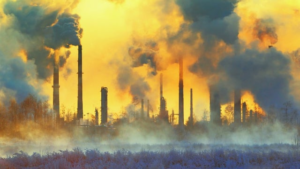
Climate change is real, caused by human activity and a serious problem that needs to be addressed. In a new study published last week, which one of us helped author, we’ve gotten a better understanding of exactly how serious. The good news is that some of the worst-case scenarios seem a bit less likely than before. The bad news is that it’s clearer than ever that warming will not be mild or modest in a world where we fail to cut emissions rapidly.
Climate scientists have been trying to narrow down how, exactly, the climate will respond to increasing levels of carbon dioxide (CO2) for well over a century. We call this “climate sensitivity” — in essence, how sensitive the climate is to our emissions. In 1979 a major report suggested that global surface temperatures would ultimately rise somewhere between 2.7 and 9.1 degrees Fahrenheit (1.5 and 4.5 degrees Celsius) if the amount of CO2 in the atmosphere was doubled. Thirty-five years later, the Intergovernmental Panel on Climate Change gave the same range in their most recent assessment report.
A four-year effort led by 25 experts in the field has finally been able to give us a better understanding of how sensitive the climate actually is. By combining lines of evidence from physics-based studies, historical temperature records and records from the Earth’s more distant past — such as during the last ice age — we find that if the amount of CO2 doubles in the atmosphere, the world will likely warm between 4.7F and 7F (2.6C and 3.9C).
Such warming may not sound too bad — after all, what difference does a few degrees make? A lot, it turns out. If we go back to the depths of the last ice age, 20,000 years ago, we find that the global average temperature of Earth was only about 9F (5C) colder than today. That was enough of a difference to lower sea level by 300 feet and build up ice sheets thousands of feet thick covering much of North America. That Earth was basically a different planet.
We now know that a worst-case scenario of high future emissions and high sensitivity risks warming comparable to the warming since the end of the last ice age, occurring over the next one or two centuries. That would impose extremely difficult challenges to human society and natural ecosystems.
It is not inevitable that we will double carbon dioxide in our atmosphere — we control whether we do better or worse than that. We can cut our emissions rapidly enough to avoid doubling CO2 this century, given the political will to do so, and still limit warming below the internationally agreed-upon guardrail value of 3.6F (2C). Alternatively, if our emissions continue increasing, we could end up tripling rather than just doubling atmospheric CO2 by the end of the 21st century. How much warming occurs is up to us, and by narrowing the range of climate sensitivity, we now have a better idea of the consequences of our actions.
On the emissions front we have some reason for modest optimism. Over the past decade, the world has made progress on bending down the emissions curve. Global carbon dioxide emissions are still rising, but only at half the rate they were in the 2000s. The world’s use of coal peaked in 2013 and has been declining. We succeeded in making clean energy less expensive, and carbon-free sources now provide more energy than coal worldwide. Nightmare scenarios where global emissions triple by the end of the century now seem far less likely, as we see them near a plateau.
At the same time, there is an ever-growing gap between where we are today and the emissions reductions needed to limit warming to globally agreed-upon targets. CO2 accumulates in the atmosphere over time, so simply stopping emissions from increasing does not stop the world from warming. Peak emissions — which we will hopefully see this decade — are only the first and easiest step on the long road to zero emissions.
At this point, our findings rule out scenarios where warming ends up being minor, but it also makes some truly catastrophic outcomes less likely. This means that how bad climate change will be rests firmly in our hands. To minimize the risk to future generations, it is crucial to control the one thing we can: our future emissions.
Dr. Zeke Hausfather is the director of climate and energy at the Breakthrough Institute. Dr. Andrew Dessler is a professor of Atmospheric Sciences at Texas A&M University.

Leave A Comment